Review: T-Mobile myTouch 4G
Nov 3, 2010, 8:49 AM by Eric M. Zeman
T-Mobile's second HSPA+ smartphone is the HTC-made myTouch 4G. It follows an evolutionary path as far as the myTouch line goes. Is this the best version yet?
Form
Is It Your Type?

The HTC-made MyTouch 4G is the latest evolution of the myTouch line, and clearly the best. It improves upon nearly every feature compared to the last two versions of the phone, and notably adds HSPA+ to the mix. If you're a slab-phone phan, er, fan, and can't wait to take HSPA+ for a ride, the myTouch has a lot to offer.
Body
The myTouch 4G is a thin, slab-style phone with a large display, weighty feel, and serious attitude. It is made of plastic, metal and glass, and HTC has done a commendable job at using the right amount of these materials in the right places. The sides are rounded, soft-touch plastic, the front is glass, and the back has a metal battery cover. Me likee. The downside here is that the myTouch comes off feeling heavier than most other phones. Sure, it will slip into a thick pocket, but you're sure going to know it's there.
What little area of the myTouch's front face is not chewed up by the display is put to use for navigation controls. Tucked at the very bottom of the myTouch, HTC has placed four physical buttons (Home, Menu, Back, and "Genius" — not search). Sort of tucked below and in between these keys is the optical trackpad. The physical controls and trackpad all feel a bit on the plastic-y side for my taste, but they are easy to find and have excellent travel and feedback. The optical trackpad is a bit superfluous given that this myTouch is a touch phone, but it does come in handy for editing text.
Typical to HTC phones, the volume toggle is placed on the left side of the phone. It is a long, thin dash perhaps an inch and a quarter long. I would prefer it to have bumps, notches or some other physical indicator that let the user know if their thumb is at the top of the bottom. This key also has minimal feedback. The microUSB port for charging and data transfer is below the volume toggle.
The myTouch has a dedicated camera key on the right side of the phone. it is a two-stage key for auto-focus and activating the shutter. Both stages are well-defined, which will make it easy to take photos. The 3.5mm headset jack is placed on top, as is the power/lock key. The lock key is easy to find with your thumb, and has decent travel and feedback.
In order to access the microSD card, it is necessary to remove the battery cover. Luckily, it pops off with a slight amount of pressure from your fingernail. The battery itself does not have to be removed to replace the microSD card.
One interesting thing to note: there are three tiny electrical contacts on the left side of the myTouch. When asked for an explanation, HTC said, "The contacts are there to allow for possible dock accessories in the future. They would allow the device to be charged while in a dock. As of today, no accessories that use the contacts exist – but the contacts allow for the possibility of such an accessory (or accessories) in the future." In other words, nothing has been announced, but there's a strong likelihood that docks are in development.
The Three S's
Screen
The myTouch has a 3.8-inch Super LCD display with 800 x 480 pixels. It looks fantastic. It is bright, colorful, and text and graphics are nearly 100% free of any sort of pixelization. Depending on the brightness setting, pure white screens did come off a little gray, but most of the time color was accurate. Indoor viewability is no problem. Outdoors, it dims some, but it's still readable for most high-level tasks. In other words, answering a phone call or taking a picture will be easy, but reading an email might not be.
Signal
Signal performance on the myTouch ranged all over the map. From no signal to five bars, from EDGE to HSPA+. In nearly all signal conditions, the myTouch was still able to access and use T-Mobile's network. Only once did I miss a call because the network couldn't find the phone (or vice versa). I tested HSPA+ speeds extensively throughout the NYC metro region. The absolute slowest download speed I attained was 1.8Mbps. The fastest the myTouch 4G reached was a hearty 5.4Mbps. Uploads ranged between 700Kbps to a best 1.36Mbps. The average download speed was a respectable 3.5Mbps, and the average upload speed was 1.1Mbps. Not bad performance at all. It's most noticeable when downloading apps from the Android Market. Apps that 1MB to 3MB in size seem to download almost instantly.
Sound
Call quality with the myTouch was pretty good, but far from great. Some calls rated very good, though I'd say more than 50% of calls were slightly below average in call quality. What does that mean? A consistent presence of static, odd noises, digitization of voices, and echoes. The good news is you'll get a strong earful of all this distortion thanks to the powerful earpiece speaker. It's plenty loud enough to hear convos in most environments. As for ringtones, the volume varied wildly. "Windchimer" for example, could barely be heard above a TV in the same room. Meanwhile, the "Old Phone" ringer was so loud it could be heard from two states away. (Both were tested with the volume all the way up.) The vibrate alert is strong enough to loosen knots from your back if applied correctly. You're going to notice it. Trust me.
Battery
Those familiar with modern smartphones won't be surprised to learn that the myTouch lasts a bit more than a day between charges. When unplugged at 7AM on a Friday, it still had about 30% of its juice left at 8AM the following day. That was enough to get me to an early lunch. Bottom line? Average users will need to charge every night, though those who using their phone sparingly might get two days out of it. Leaving town for a night or two? Bring your charger.
Basics
Menus
Just like the myTouch 3G Slide, the myTouch 4G doesn't use HTC's Sense UI, but it doesn't really use stock Android, either. HTC and T-Mobile have made some subtle changes that make the myTouch at least different from other Android handsets, if not more usable.
The myTouch has five customizable home screens. The central home screen lacks the search bar along top as is customary for HTC Android handsets. What you get instead are four software apps loaded on the home screen for contacts, messages, browser and Qik Video Chat. Unlike the "free-floating" Android icons we're using to seeing, these (and all the icons in the Android main menu) are framed in an opaque square. It doesn't make them any easier to use. They simply look different.
The main menu tab at at the bottom of the screen is flanked by two permanent icons. The one on the left launches the phone, and the one on the right launches the Faves contact list. These buttons persist across all five home screens, making it easy to get to the phone in a hurry.
Another thing that is slightly different is the notification shade. When you drag it down, it displays notifications as normal, but it also includes the four most recently used apps. This means if you've used apps W, X, Y, and Z, it will show the icons for those apps when you pull the shade down.
The myTouch also offers HTC's "myModes." Modes are collections of settings that alter what apps are prioritized. For example, there are a handful of preloaded modes, such as KidsZone, which disables access to messaging and the dialer, and lets kids use the phone without harming it. Another is Home, which turns off email notifications. The Work mode prioritizes all messaging features. Users can also create their own modes. The modes make it easier to alter the behavior of a handful of settings at once rather than one at a time.
Lastly, another change I noticed is that the unlock screen contains more notifications, such as missed calls, SMS messages, and emails.
Other than that, not much has changed about the way Android's menus behave.
Calls/Contacts
Calls
The constant presence of the software phone button helps alleviate the pain of not having a real phone key, somewhat. Press it, and it takes you to the dialpad. The most recently placed/missed call is placed above the dial pad. Press it to re-dial, or dial a new number directly if you want to talk to somebody else.
As you type, the phone sorts through your phone book in one of the coolest ways I've seen. Say you dial an area code. All the matches in that area code are immediately pulled up into a cover-flow-esque graphic. You can then swipe left or right through those contacts to find the right contact/number. It will also tell you how many matches you have for the digits dialed, and preview Facebook profile photos if you've synced a Facebook account. Touch the face of the person you want to call, and the myTouch 4G connects you. Neat
The usual call history, calling groups, faves and online directories are all supported.
Contacts
Android is very adept at handling contact databases. It seamlessly merges Google and Facebook contacts, and automatically cross-populates data when it is incomplete in one of those databases. That means if you have somebody's email address in Gmail, but their phone number only in Facebook, you'll see both in a single contact page for that person. The usefulness of this feature cannot be understated. It will also pull down Exchange contacts if you have them. All of this happens automagically from the internet in the background. God I love modern technology.
HTC has added its own touches to make things better/different. The myTouch 4G comes with a version of its "Faves" contact program, which is borrowed from Sense UI. Users can populate the program with their most-often contacted friends, family, colleagues, etc. The graphics are fun, and the UI does this neat little flippy card thing when you interact with it, but it's also useful. When a Fave is displayed on the page, there are icons that appear under the Fave's picture that let users easily call, compose an SMS, send an email, or interact with them on Facebook.
Messaging
Android phones are some of the most adept when it comes to supporting a multitude of messaging tasks.
Despite the fact that Android 2.2 supports Exchange, the myTouch comes with the feature-rich Gmail application and a separate, HTC-developed email application that, wait for it, supports Exchange. The Gmail application is really great, and offers the best integration between Gmail and a smartphone. The browser-based version of Gmail for Android phones is also very, very good. The HTC work email app is one that IT can take control of if need be. I doubt many will use it. It also supports POP and IMAP email.
The myTouch 4G supports GTalk out of the box and also includes Yahoo Messenger. There's no support for AIM or Windows Messenger Live. You'll have to dive into the Android Market to find those. They all work well enough.
The messaging app works just fine. It threads conversations together, so you can follow the train of thought with your friends, and even see pictures embedded in the conversation.
The myTouch 4G comes with Swype and with Dragon Dictation on board for those who hate to type on glass screens. Swype lets users trace words across a software QWERTY keyboard rather than peck at them. It can speed up text input in some circumstances. Dragon Dictation relieves your finger altogether, and lets you speak your messages, emails, and so on. I had mixed results with it.
Social Networking
The myTouch 4G comes with HTC's Friend Stream software. Friend Stream channels all your Twitter and Facebook account status updates into one place. You can post your own status updates, as well as filter through those of your social network friends. It will also link to Flickr. Friend Stream is an OK application, though I find that it doesn't refresh as often or consistently as I'd like.
What's missing? The actual, native Facebook, Twitter, Foursquare and MySpace apps. None of them are pre-installed. In fact, not even HTC's Peep Twitter app is pre-installed. Friend Stream is all you get out of the box. You have to go digging into the Android Market to find the official Facebook and Twitter apps. Why do that? It's annoying. I can't imagine that anyone enjoys interacting with Friend Stream more than the native Facebook application for Android.
Android supports pretty much any and all social networks. The Android Market is chock full of apps that interface with them. Leaving them out of the initial build of a phone's software just makes extra work for the end user. Tsk, tsk, T-Mobile and HTC.
Extras
Music
The myTouch 4G offers one of the neatest music player ideas I've seen yet on an Android device. Rather than call out just the "Music" player, the myTouch 4G has a "Media Room." Go to the media room, and you have access to your on-board music and video. Additionally (and this is the fantastic part), the Media Room software also integrates an FM radio and Slacker Radio into the same media interface. That's freaking awesome. Way to go, HTC!
HTC has also re-skinned the player itself. When music is playing, rather than a static picture of the album cover with playback controls under it, you can swipe through the songs in the current playlist. It's not much, but it's something.
The menu items allow you to share the song, add it to playlists or look at song file info, but falls short of offering much-asked-for features such as an equalizer of any sort.
Moving to the FM radio or to Slacker from the main media player is as simple as pressing a software button at the bottom of the media player screen. Of course, the FM radio necessitates headphones, and users have to set up a Slacker account before using Slacker. The myTouch 4G also comes with the Amazon MP3 store pre-loaded. It is a breeze to use Amazon to search for and download music if you already have an account.
One thing worth noting, the way the lock screen works when music is playing is really cool. When you press the lock key once, you see the album cover and you have access to the play/pause rewind/fast-forward buttons without unlocking the phone first. Music controls are usable with the phone still locked. This means you can shut off the music player quickly when it needs to be silenced. That's a nice feature.
Music playback through the speaker actually sounded pretty good. It sounded better through stereo headphones. Music playback through stereo Bluetooth headphones was pretty good, too.
Camera
Camera
Pressing the dedicated button for about one second will launch the camera, which then takes another 1.5 seconds or so to fully open. Not the fastest camera draw in the west, but I'll take it.
HTC is not using the stock Android camera software as it did on the HTC myTouch 3G Slide. Instead, it has cooked up something slightly new. There are four controls on the right side of the display: Video camera, Flash, Color Effect (sepia, B&W, etc.), and Photo Gallery. These are self explanatory. There is also a software shutter button on the screen in addition to the physical camera key. There is a little icon in the lower left side of the display that, when pushed, switches between the main camera on the back of the phone and the user-facing camera.
If you want to fine-tune the camera's behavior, then you have to resort to pressing the options key on the front of the myTouch. There, you can adjust the shooting mode, exposure, saturation, sharpness, add effects, as well as dial down and alter the core settings. ISO (the camera's "sensitivity") ranges from an incredible 100 to 800, which is as good as some point-and-shoot cameras.
If you see something on the display and you want it to be in focus, tap it. The camera will focus on that spot. The myTouch focused reasonably fast, and it was pretty snappy at taking pictures, too.
The review screen lets you send the photo off wherever you want to send it with just a few quick taps.
Gallery
The gallery can be opened from either the camera or the menu, and presents pictures sorted into different albums. The myTouch takes a unique approach in that it offers album categories such as Facebook, Faves, My Albums, and Flickr. In other words, pictures that you've shared to any of those services will be pulled into a separate album for that particular service. It also appears in the myTouch 4G's main gallery. This is a neat way to help you organize your photos and help you remember what photos you've shared with what services.
There are always some software buttons along the bottom of the screen when viewing images that let you access menu options, share photos, delete them or get back to the camera. This time around, there are more editing functions. Photos can be cropped and rotated, and effects can be applied. None of the editing features lean towards advanced, however, and you'll find no silly frames or text bubbles here.
Photos/Video
Photos
The myTouch 4G has a five megapixel camera. That's enough pixels for most people and most needs. I found images captured to be clean, clear and well focused. Color came through accurately, and — when the flash doesn't go off — indoor shots actually look passable. Sure, there's a bit of extra grain and noise, but it's an acceptable level. The camera does much better outdoors. Colors look rich and lush.
One thing that impressed me was the myTouch 4G's ability to take macro shots (close-ups). I was able to focus on subjects that were about two inches from the lens. That's amazingly close for a camera phone. Overall, I was pleased with image quality. You have to pay attention to the settings when in challenging shooting environments, but chances are you're going to come away with a usable shot.
Video
The myTouch 4G improves on its predecessors by offering 720p HD video capture. Video was much better than video captured with the HTC mTouch 3G Slide, for example. The myTouch 4G displayed some noise and grain, but focus was solid and there was no odd motion or ghosting as you panned the myTouch 4G around. You'll definitely be able to capture some YouTube-worthy clips. Too bad the phone doesn't have an HDMI port for easier sharing of HD content.
Browse/Customize
Browser
The browsing experience on the myTouch 4G is mostly the same as on any other Android phone, except for the fact that it is a hell of a lot faster when under HSPA+ coverage. The browser software does not appear to have been updated, and other than the substitution of T-Mobile's home page, you might not be able to tell it apart from other Android handsets. Still, that HSPA+ data connection is exciting when you have it. Web pages just pop onto the screen fully loaded.
You can use your finger to navigate around web pages directly on the screen or use the track pad on the front of the phone. There is a full list of settings that let you customize how the browser operates (such as enabling / disabling JavaScript, managing passwords and privacy).
Customize
The myTouch 4G is an HTC Android phone. That means you can change nearly everything. In fact, T-Mobile and HTC have made a pretty big deal about the myTouch series devices being yours to customize as you please. For example, when you first boot the phone, it asks you a bunch of questions about how you plan to use the phone (mostly to check email, mostly to upload photos, etc.) and it then creates a user profile on the fly during set up. That's pretty cool.
The myTouch 4G also offers a bunch of different themes and modes which were conceived from HTC's Sense UI. They can be customized at will, and the different profiles prioritize different applications depending on how you'll be using the device.
Obviously, with five home screens (expandable to 7 if you want!), Android widgets and shortcuts, the possibilities to personalize the phone are unlimited.
Extras
Apps
You know the drill here. The Android Market is up to 100,000 apps. You want apps, the Android Market is your path to nirvana. Given the sheer volume, there's very little that isn't available. The myTouch 4G also comes with T-Mobile's App Pack. This service recommends a bunch of different apps for a number of different categories, such as entertainment, fitness, music, news, etc. I couldn't discern any rhyme or reason as to why T-Mobile selected the apps in these categories that it did. Some were free, others cost money. Some were rated well, others poorly.
Bluetooth
The myTouch 4G supports both stereo and mono Bluetooth headsets. I had no trouble pairing with a number of different devices. Sound quality of phone calls through mono headsets was merely "acceptable." Sound quality through stereo headphones and speakers was actually a bit better than the mono headset. I was also able to pair the myTouch 4G with my computer and pass files back and forth with no problems. The Bluetooth file manager worked like a charm.
Clock
The clock and weather apps have been really downplayed on the myTouch 4G when compared to other HTC phones. They are there, and can be added/customized as you'd expect, but they aren't front and center out of the box. A number of different clock faces are available, and you can always check the time quickly with a quick press of the lock key. It also has the desk clock app, which can be used when the phone is sitting on a desk or charging at night. It lets you see the time, weather, and a few other bits of data.
Games
The myTouch 4G is preloaded with a handful of games, including Asphalt 5, Monopoly, and RockBand. Sadly, these are demos. Of course you can choose to pay for the full version. Still, they show off the gaming powers of the device. I gave the Asphalt 5 demo a spin, and enjoyed testing my driving skills via the myTouch 4G.
Genius Button
Instead of offering Google Search as the native search function, the myTouch 4G carries forward the "Genius Button" concept. Press it, and rather than a simple search box, you get a voice-activated search tool. There are four main categories: Call Someone, Send Message, Search Web, and Find a Business. Basically, the app wants you to say the word "Call" then add a contact name. Or say "Send" and then choose a contact name. Or "Search" for something on the way, etc. Once you get the hang of it, it works OK. I much prefer a regular old Google Search box. Thankfully, you can choose to add the regular Google Search tool to the home page.
GPS
The myTouch has Google Maps preloaded. Oddly, TeleNav's app isn't on board, and it usually is packaged with T-Mobile phones. No matter, Google Maps with its Navigation feature works just fine for getting around town — or out of town, as the case may be. Google Maps provides a straight-forward version of mapping and navigation. The GPS locked onto satellites quickly, and it was accurate when determining location (especially if you set the phone to get help from wireless networks).
Wi-Fi Calling / Hotspot
The myTouch offers Wi-Fi-based calling. Don't confuse it with the UMA-based calling featured offered by older T-Mobile phones. This feature allows users to make phone calls via Wi-Fi in their homes (or though any open access point). Unlike UMA, if you walk outside and lose the Wi-Fi signal, the call ends. There is no transition to the cellular network as on UMA handsets.
The hotspot feature is infinitely more useful. For a mere $15 extra per month (hey, that's cheaper than AT&T or Verizon), myTouch 4G users can turn the phone into a mobile Wi-Fi hotspot. I successfully connected five other devices at once to the myTouch 4G. Using browser-based speed.net on my laptop, I was still able to get a respectable 3.6Mbps on the downlink.
Google has done a great job of making the software easy to use. Seriously, any dummy could do it. It's so much better than the (unapproved) third-party tethering apps for Android.
Wrap-Up
If you bought the original myTouch 3G from T-Mobile last year, run to your nearest T-Mobile store Right. Now. and buy the T-Mobile myTouch 4G. It has a better screen, better software, better battery life, faster internet speeds, more features, and is a worthy replacement for your mid 2009-era Android kit.
The hardware of the myTouch 4G never gets in the way, call quality is OK, but the Super LCD screen and respectable battery life make it tons more useful than the original myTouch 3G.
HTC has actually addressed some of Android's media issues on the myTouch 4G. The camera software is better than the stock Android kit, and HTC's integration of an FM radio and Slacker Radio into the native media player is sheer genius.
The browsing experience is lickety-split when HSPA+ is available. According to T-Mobile, it will cover 200 million Americans by the end of 2010 with HSPA+ in the top 100 markets. That means odds are you'll have access to HSPA+ if you're in a large city.
For T-Mobile Android fans, the only devices that are serious contenders with the myTouch 4G are the Samsung Vibrant or the HTC G2. With the tethering option available for an extra $15/mo, the myTouch 4G is an easy choice to make for the highly-connected user.
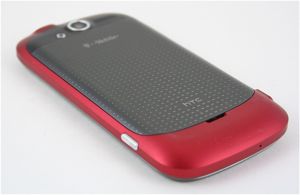
Comments
great review.... BUT
You know what my problem is...
Such great specs wasted too. Second generation 1GHz processor, Front facing camera, Sony Super LCD, HSPA+. The target audience of the MyTouch series doesn't give a crap. The MyTouch line was designed to be midrange and these are high end specs.
If T-Mo were smart enough they should have put all of these features onto the G2. Then they would have created the perfect phone giving the Epic a run for it's money. But nope as usual T-Mo misses the the mark.
I'll stick with the Vibrant for now....
(continues)
Front Camera and DLNA?
The fact that it sports a second generation Snapdragon processor with the newer video cards would be nice too.
Really a beast of a phone.
Great review.
I was a little disappointed with the camera myself, though I am currently comparing everything against the iPhone 4. Everything else is super speedy and very well done.
Even though I am an iPhone fanboy, I kind of like the punch T-Mobile took at AT&T/Apple with their new AD this morning... pretty funny!
justfinethanku said:
Even though I am an iPhone fanboy,
At least you admitted it. Good for you. That's the first step towards recovery.
(continues)


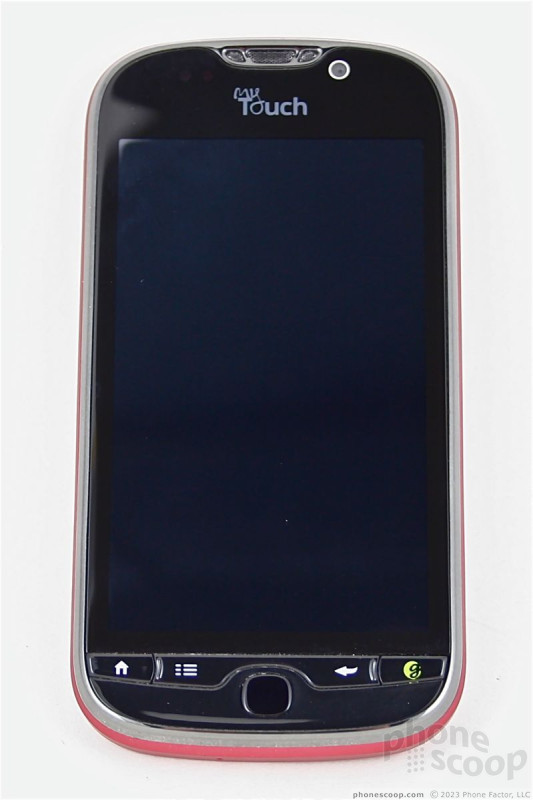










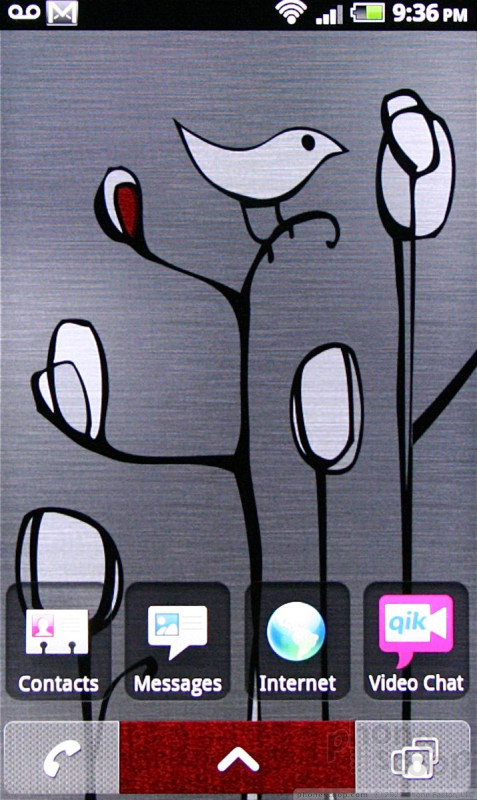













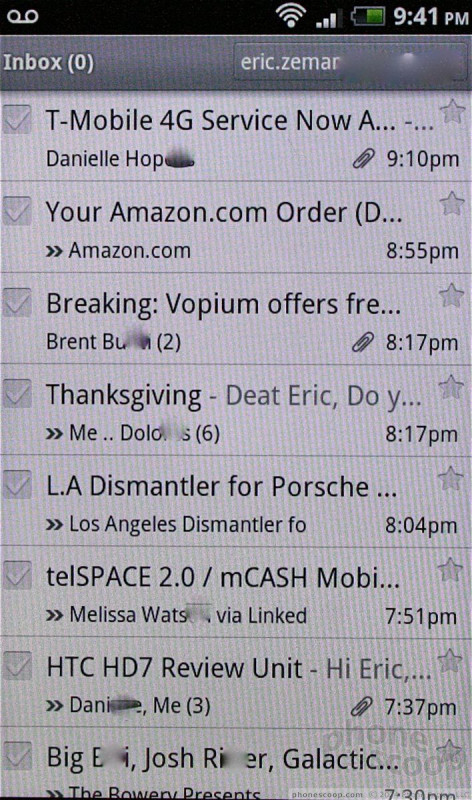



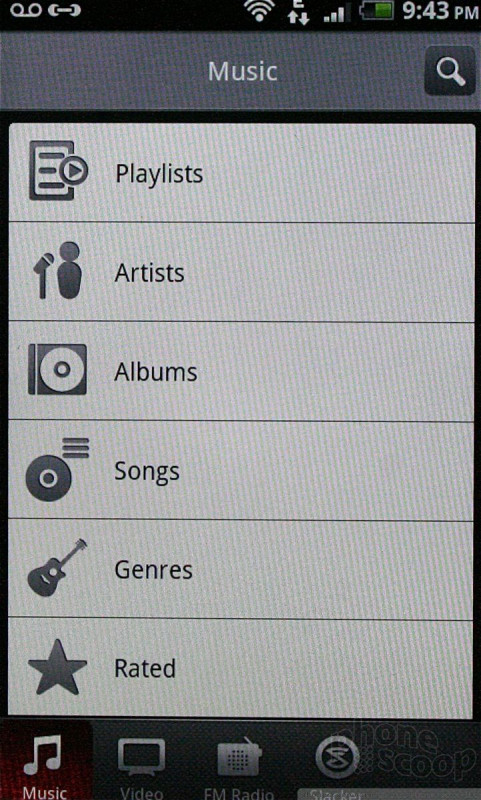






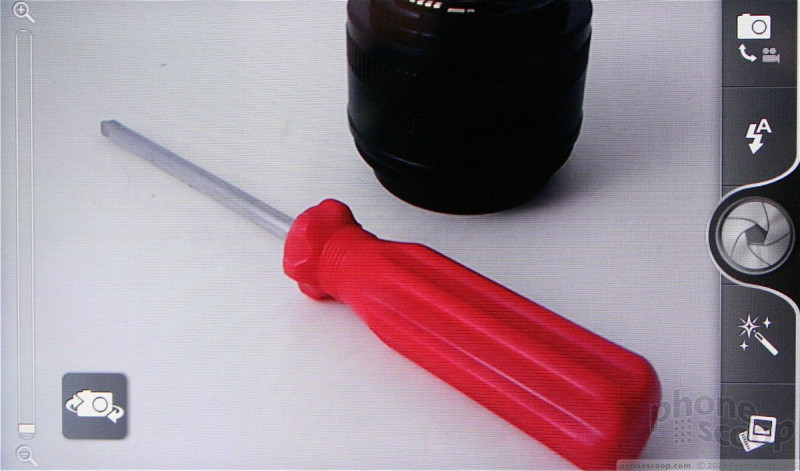



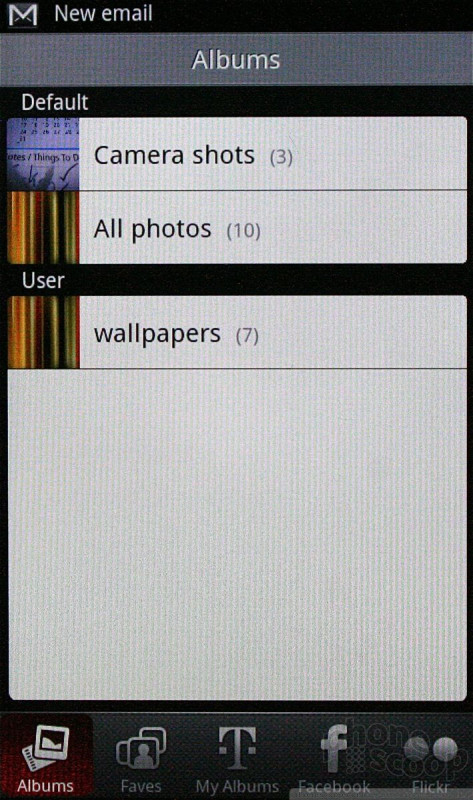






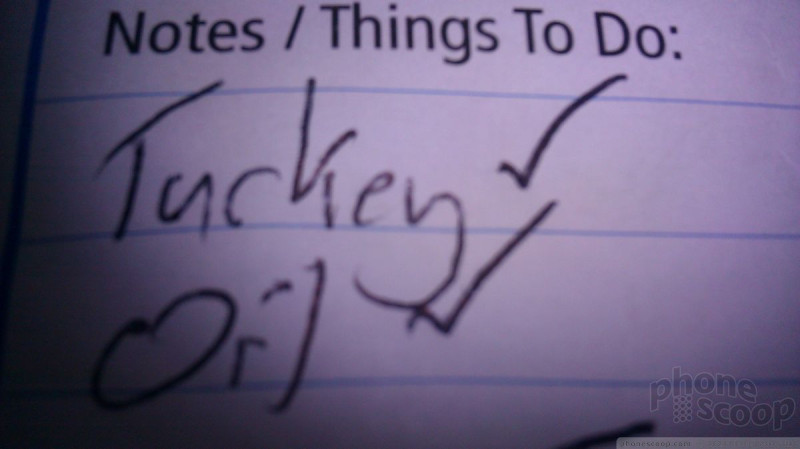















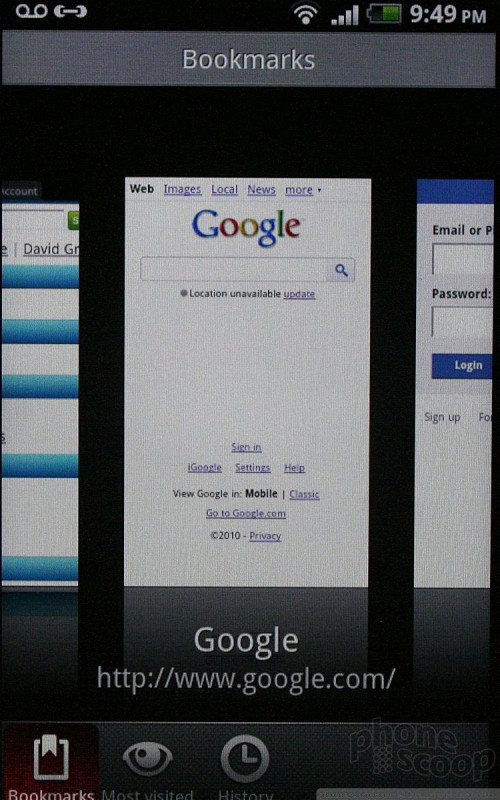





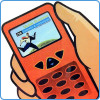 CTIA Fall 2010
CTIA Fall 2010
 HTC myTouch 4G
HTC myTouch 4G



